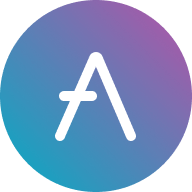Aave’s Evolution: From ETHLend to DeFi Powerhouse with GHO Stablecoin and Real-World Asset Integration
Aave's History and Evolution: From ETHLend to Aave
Aave, a leading decentralized finance (DeFi) protocol, has revolutionized the financial landscape since its inception. Founded by Stani Kulechov in 2017, the platform initially launched as ETHLend, a peer-to-peer lending platform built on Ethereum. ETHLend aimed to connect lenders and borrowers directly, eliminating intermediaries and fostering a transparent financial ecosystem.
In 2018, ETHLend underwent a significant rebranding to become Aave, which means "ghost" in Finnish. This name symbolizes the protocol’s vision of creating a seamless, decentralized financial system. Since then, Aave has expanded its offerings and solidified its position as a cornerstone of the DeFi space.
Core Functionalities: Lending, Borrowing, and Flash Loans
Aave’s core functionalities center around lending and borrowing digital assets. Users can deposit cryptocurrencies into liquidity pools to earn interest, while borrowers can access these funds by providing collateral. This mechanism ensures security for lenders and stability for the protocol.
Flash Loans: A Game-Changer in DeFi
One of Aave’s standout features is its flash loans. These allow users to borrow assets without collateral, provided the loan is repaid within the same transaction block. Flash loans have unlocked new possibilities for:
Arbitrage Opportunities: Exploiting price differences across exchanges.
Debt Refinancing: Optimizing loan terms and interest rates.
Advanced Financial Strategies: Enabling complex DeFi operations.
This innovative feature has made Aave a favorite among experienced DeFi users and developers.
Aave V3 and V4 Upgrades: Pioneering DeFi Innovation
Aave has consistently evolved to meet the growing demands of the DeFi ecosystem. The introduction of Aave V3 brought several groundbreaking features:
Cross-Chain Liquidity (Portal): Facilitates seamless liquidity transfers across multiple blockchain networks.
Efficiency Mode (eMode): Optimizes borrowing for correlated assets, maximizing user borrowing power.
Enhanced Risk Parameters: Improves risk management for correlated assets, ensuring protocol stability.
Looking ahead, Aave V4 focuses on creating liquidity hubs and specialized lending markets. These upgrades aim to amplify network effects and position Aave as a central player in DeFi liquidity provision.
GHO Stablecoin: Aave’s Decentralized Dollar
Aave’s native stablecoin, GHO, is pegged to the US dollar and fully backed by over-collateralized assets. Unlike traditional stablecoins, GHO is decentralized, aligning with Aave’s mission to eliminate intermediaries in financial transactions.
Key Benefits of GHO
Transparency: Users can verify the collateral backing GHO on-chain.
Accessibility: GHO can be minted directly by users who provide sufficient collateral.
Integration: Seamlessly integrated into Aave’s ecosystem for lending, borrowing, and other DeFi activities.
The Ethereum Foundation’s adoption of GHO for loans further underscores its reliability and potential for institutional use.
Decentralized Governance via the AAVE Token
Aave employs a decentralized governance model, empowering its community to shape the protocol’s future. Governance is facilitated through the AAVE token, which enables holders to propose and vote on changes to the protocol.
Governance Highlights
Updates to risk parameters.
New asset listings.
Protocol upgrades.
This community-driven approach ensures Aave remains adaptable to the evolving needs of its users.
Security Measures: Audits, Bug Bounty Programs, and Chainlink Integration
Security is a top priority for Aave. The protocol undergoes regular audits to identify and address vulnerabilities. Additionally, Aave runs bug bounty programs to incentivize ethical hackers to report potential issues.
Aave integrates decentralized oracle networks like Chainlink to ensure accurate and tamper-proof data feeds. Notably, Aave leverages Chainlink’s Smart Value Recapture (SVR) to reclaim oracle-related MEV (Miner Extractable Value), increasing revenue and supporting sustainable DeFi economics.
Cross-Chain Interoperability and Multi-Chain Support
Aave’s commitment to interoperability is evident in its support for multiple blockchain networks, including Ethereum, Avalanche, Fantom, and Polygon. This multi-chain approach enhances accessibility and usability across diverse ecosystems.
Cross-Chain Liquidity
The cross-chain liquidity feature introduced in Aave V3 further strengthens its position as a leader in DeFi interoperability, enabling seamless asset transfers between chains.
Real-World Asset Integration: Bridging Traditional Finance and DeFi
Aave is expanding into real-world assets (RWAs) through initiatives like Horizon. This move bridges the gap between traditional finance and DeFi, allowing users to borrow against assets such as stocks, bonds, and real estate.
Benefits of RWA Integration
Unlocks new use cases for DeFi.
Attracts a broader audience.
Fosters mainstream adoption.
By integrating RWAs, Aave is paving the way for a more inclusive financial ecosystem.
Market Dominance and TVL Statistics
Aave’s total value locked (TVL) exceeds $11 billion, reflecting its significant adoption and market dominance. The protocol’s robust features, security measures, and multi-chain support have contributed to its widespread use across the DeFi ecosystem.
Conclusion: Aave’s Role in Shaping the Future of DeFi
Aave’s journey from ETHLend to a DeFi powerhouse highlights its commitment to innovation and user-centric design. With features like flash loans, decentralized governance, and the GHO stablecoin, Aave continues to push the boundaries of decentralized finance.
As the protocol expands into real-world assets and enhances its technical architecture, Aave is poised to play a pivotal role in shaping the future of finance, bridging the gap between traditional systems and the decentralized world.


